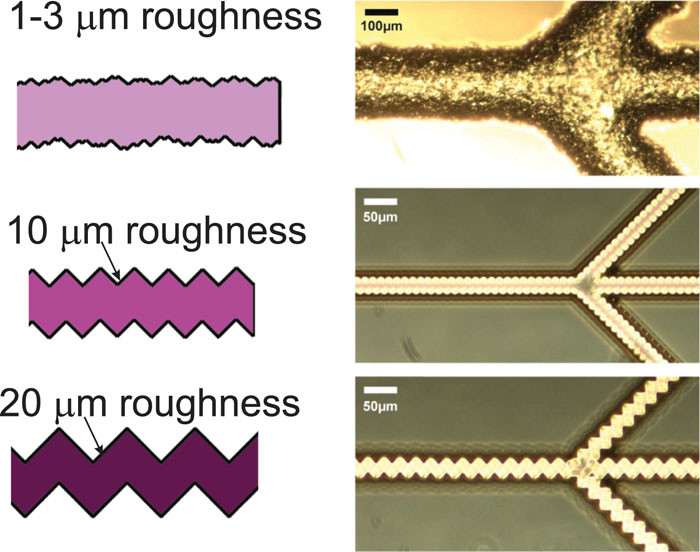
Editor's Picks: Oil entrapment by rough walls.
At the start of November; Bijoyendra Bera, Ines Hauner, Mohsin Qazi, Daniel Bonn, and Noushine Shahidzadeh published a paper in Physics of Fluids about the influence of wall roughness on the entrapment of oil in microfluidic channels. The article has been chosen as one of the Editor Pick's of October/November of 2018
In this work, the authors investigated the stability of a viscous liquid (oil) in a microchannel when displaced by another viscous liquid (water) as a function of the roughness of the microchannel. Two-phase flows in a micrometer scale environment are quite crucial in many practical applications, and studied widely as well. The role played by the surrounding medium's roughness, however, has steadfastly been overlooked. Our colleagues performed fluorescence microscopy experiments in a novel rough microfluidic channels to capture the behavior of displaced oil at different characteristic roughness values, different flow rates as well as different viscosity contrasts. The viscous instability and hence the amount of trapped oil were found to be dependent on all these parameters.
Subsequently, the analysis of the experimental results led to the quantification of the trapped oil droplets as a function of the characteristic roughness of the system. The existing scaling laws provide information regarding the viscosity contrast of the involved phases and the flow rate in relation to trapped droplets. Bera et al.'s proposed modification incorporates the roughness parameter into the existing scaling laws, and hence, attempts to portray a complete picture of fluid displacements in a rough medium.
More more information, check out the full article: Oil-water displacements in rough microchannels
